Research
Below are summaries of the research areas that are being studied by the OSL!
Remote Sensing and Biomedical Imaging
A major research area of the OSL is in spectral and polarimetric imaging as applied to both remote sensing and biomedical 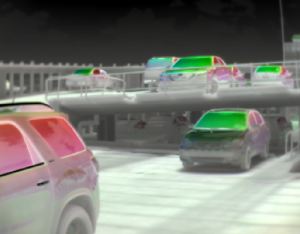 imaging applications. One area of emphasis is incorporating novel Polarization Grating (PG) technologies into spectral and polarimetric sensors, thus increasing the sensor’s spatial, spectral, or radiometric performance, or reducing the sensor’s overall size or cost. Additional emphasis is placed on developing ultra-compact sensors with novel capabilities, such as the ability to passively measure distance beyond the diffraction limit. Lastly, research is ongoing in developing novel polarization sensitive photoconductive and photovoltaic detector technology.
imaging applications. One area of emphasis is incorporating novel Polarization Grating (PG) technologies into spectral and polarimetric sensors, thus increasing the sensor’s spatial, spectral, or radiometric performance, or reducing the sensor’s overall size or cost. Additional emphasis is placed on developing ultra-compact sensors with novel capabilities, such as the ability to passively measure distance beyond the diffraction limit. Lastly, research is ongoing in developing novel polarization sensitive photoconductive and photovoltaic detector technology.
Remote Sensing
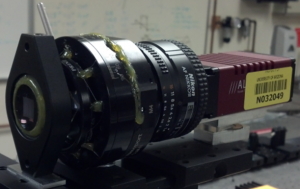 Spectral sensing can be used to quantify chemicals in the environment, perform quality control in industrial and commercial manufacturing processes, assess water quality and vegetation health, identify targets, and for mineral mapping. Meanwhile, polarimetric sensing can be used to enhance a target’s contrast in cluttered backgrounds, measure surface roughness, and to quantify aerosols in the atmosphere.
Spectral sensing can be used to quantify chemicals in the environment, perform quality control in industrial and commercial manufacturing processes, assess water quality and vegetation health, identify targets, and for mineral mapping. Meanwhile, polarimetric sensing can be used to enhance a target’s contrast in cluttered backgrounds, measure surface roughness, and to quantify aerosols in the atmosphere.
Biomedical Imaging
Meanwhile, spectral sensing in biomedical imaging can isolate cellular fluorescence or reflectance signatures from a cluttered background. This is useful for identifying diseased cells for diagnostic purposes, and can often avoid biops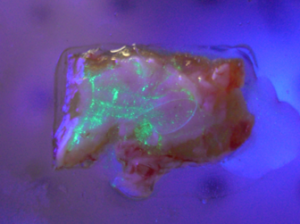 y and pathology. Furthermore, it can aid in establishing a diseased tissue’s depth, lateral extent, and concentration. Similarly, polarimetric imaging can enhance contrast through single and multiple scattering. Specifically, healthy tissue is often highly structured and ordered, while diseased tissue is more random. Therefore, diseased tissue often increases depolarization while generally reducing retardance, while the converse is true for healthy tissues.
y and pathology. Furthermore, it can aid in establishing a diseased tissue’s depth, lateral extent, and concentration. Similarly, polarimetric imaging can enhance contrast through single and multiple scattering. Specifically, healthy tissue is often highly structured and ordered, while diseased tissue is more random. Therefore, diseased tissue often increases depolarization while generally reducing retardance, while the converse is true for healthy tissues.
Algorithms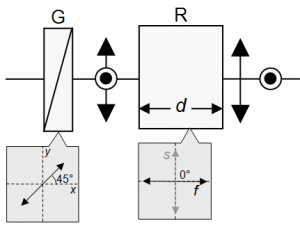
Another area of active research is in algorithms. Our specific area of emphasis is in applying algorithms to large databases of remotely sensed data with associated ground truth. One active area of research in our laboratory within this area is in agriculture; specifically, identifying how remotely sensed data can be used to supplement or replace manual (e.g., labor-intensive) measurements of plant tissues. Ultimately, we hope to transition these findings into providing actionable information for agricultural management decisions. Work accomplished within this agronomic space has been achieved in conjunction with the AMPLIFY program in the College of Agricultural and Life Sciences. Additionally, we are developing new algorithms, and applying existing algorithms in new ways, to the calibration of our optical sensors.
Active Learning
An excellent teaching-related quote ironically summarizes the more traditional lecture as “the process by which the notes of the lecturer become the notes of the student without passing through the mind of either” (Anonymous). Research has demonstrated that this concept, of mechanically “transferring knowledge” from projectors and blackboards (the lecturer) to the students’ notebooks, supports a low level of student cognition. Yet this pattern of lecturing continues in undergraduate and graduate education. In order to ensure higher participation and quantitative learning gains during lecture, our goal is to make use of, and to improve, best-practices in teaching. This includes generating materials for new areas of ECE and Optics education, including new ranking tasks, post lecture-tutorials, case studies, and instant feedback-immediate assessment testing and think-pair-share questions using colored voting cards*.
low level of student cognition. Yet this pattern of lecturing continues in undergraduate and graduate education. In order to ensure higher participation and quantitative learning gains during lecture, our goal is to make use of, and to improve, best-practices in teaching. This includes generating materials for new areas of ECE and Optics education, including new ranking tasks, post lecture-tutorials, case studies, and instant feedback-immediate assessment testing and think-pair-share questions using colored voting cards*.
*Courtesy of CAE Astronomy 101
Projects
Projects in all areas are currently ongoing, and consist of multiple applications.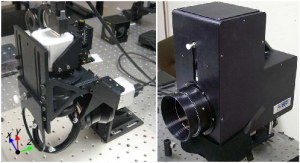 These include remote detection and identification of projectiles, endoscopic fluorescence imaging for disease detection in the esophagus, retinal spectroscopy and polarimetry for glaucoma detection, satellite tracking and orbital prediction, novel superresolution imaging techniques, and real-time monitoring of thermal spray processes.
These include remote detection and identification of projectiles, endoscopic fluorescence imaging for disease detection in the esophagus, retinal spectroscopy and polarimetry for glaucoma detection, satellite tracking and orbital prediction, novel superresolution imaging techniques, and real-time monitoring of thermal spray processes.
